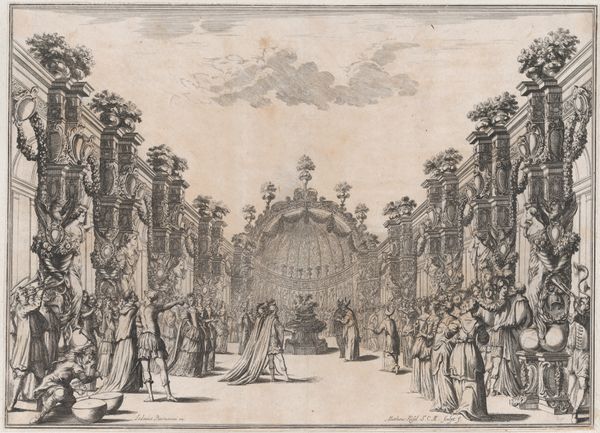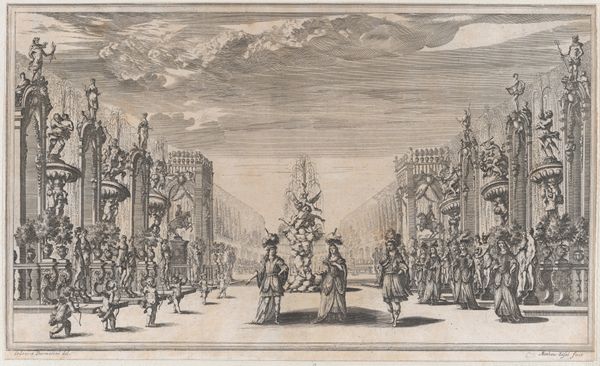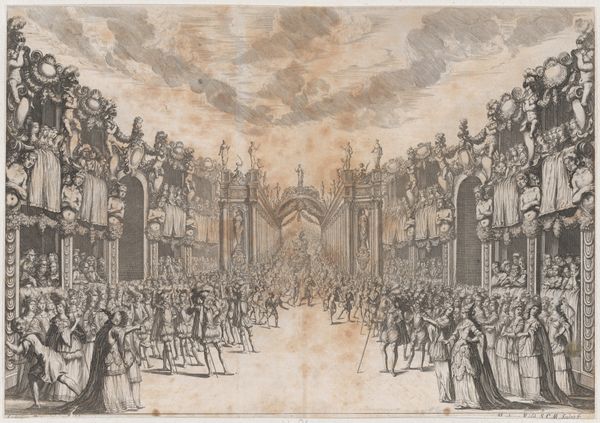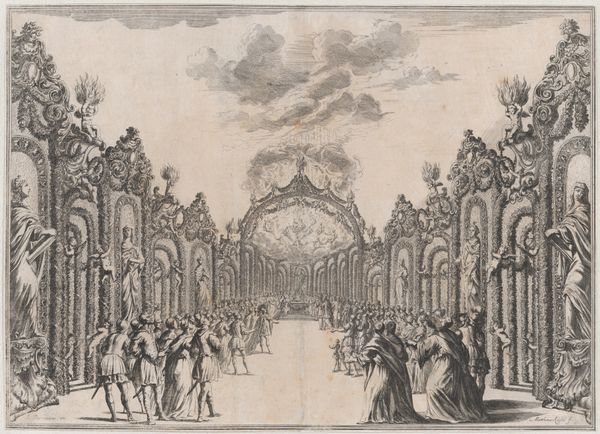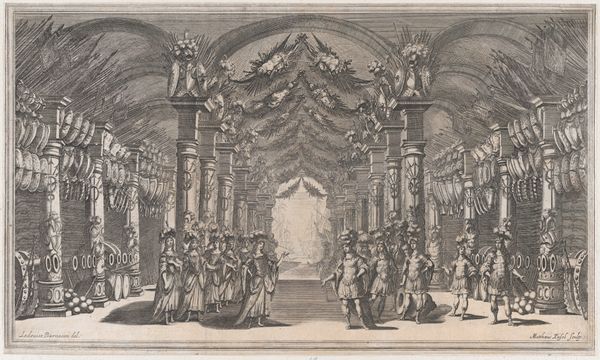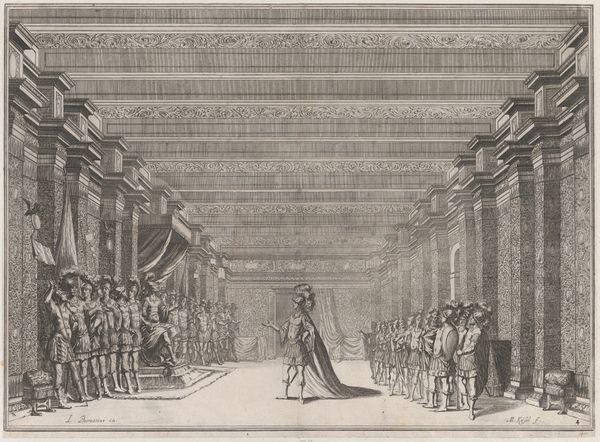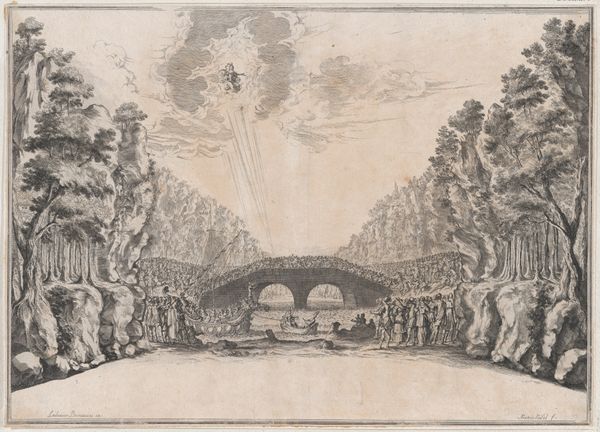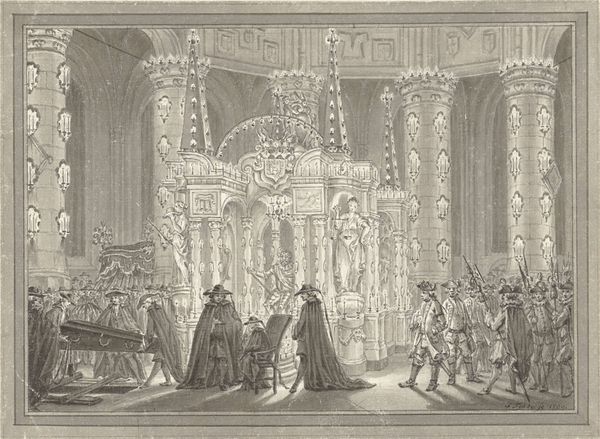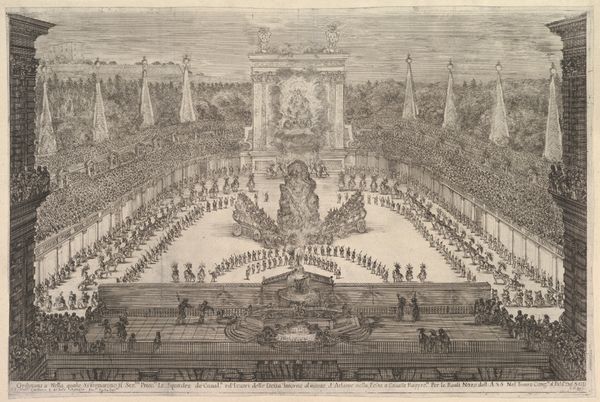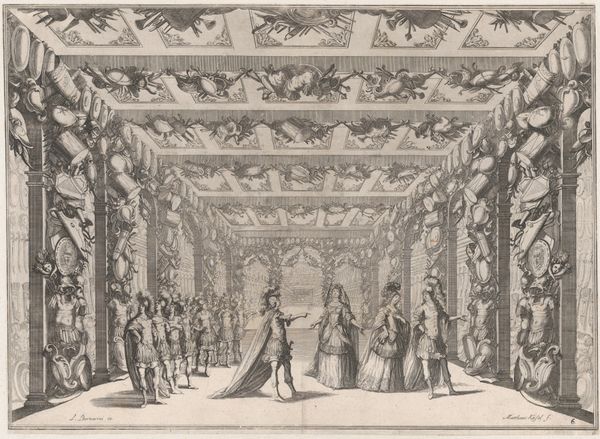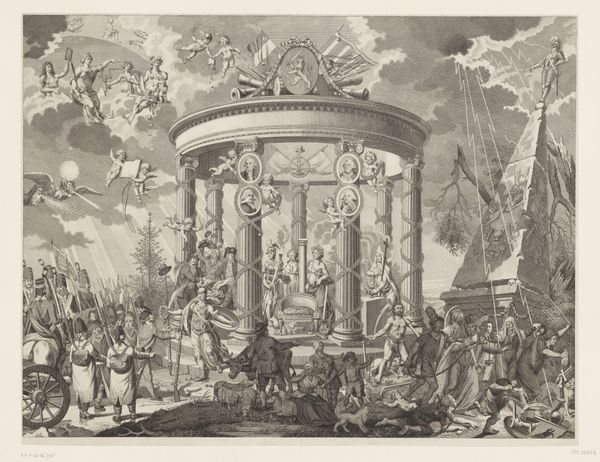
Three men at center, an old man who holding out an open book for a soldier to sign as a smaller man stands to the left holding ink; a large group of men surround them; set design from 'Il Fuoco Eterno' 1674
0:00
0:00
drawing, print, engraving, architecture
#
drawing
#
baroque
# print
#
soldier
#
arch
#
men
#
history-painting
#
engraving
#
architecture
Dimensions: Sheet (Trimmed): 12 1/16 in. × 17 in. (30.6 × 43.2 cm)
Copyright: Public Domain
Editor: Here we have Mathäus Küsel's engraving from 1674, a set design from 'Il Fuoco Eterno.' It has a ceremonial feeling with lots of figures and these almost architectural follies. What catches your eye in this image? Curator: What fascinates me is the mechanics of production. Küsel wasn't just an artist, he was part of a workshop. This engraving, seemingly a design, is also a commodity. Think about the copper plate, the labor involved in its creation. How does that process shape what we see here, the dissemination of images, ideas, power? Editor: That’s interesting; I hadn't considered the physical plate and production aspect. Curator: Consider the 'architecture' you mentioned. Are they true architectural renderings or theatrical representations of power through design and material excess? Note the way they're presented; not just for artistic vision but as blueprints. Editor: I suppose it's a bit of both; I see classical elements represented in the statues that may not be realistically buildable in the long run, but more evocative of the theme as part of the opera set design. Curator: Exactly! Now, think about the social context. Who was commissioning this? Who was consuming it? What does this theatrical production, meticulously recorded in print, tell us about Baroque spectacle and the societal structures that support it? It points to specific economic relationships tied up in art and performance. Editor: So, you're less focused on the "art" itself, and more on what its existence says about 17th-century society? Curator: Precisely. The lines between art, craft, and industry blur. By studying Küsel's production methods, we gain insights into material culture and power dynamics far beyond just aesthetics. It's about unpacking how things are made and who benefits. Editor: That’s a different way of looking at it – focusing on production changes the questions you ask of a piece of artwork. Curator: Indeed. Instead of "Is it beautiful?", we ask "How did it get here and what does that reveal?".
Comments
No comments
Be the first to comment and join the conversation on the ultimate creative platform.
